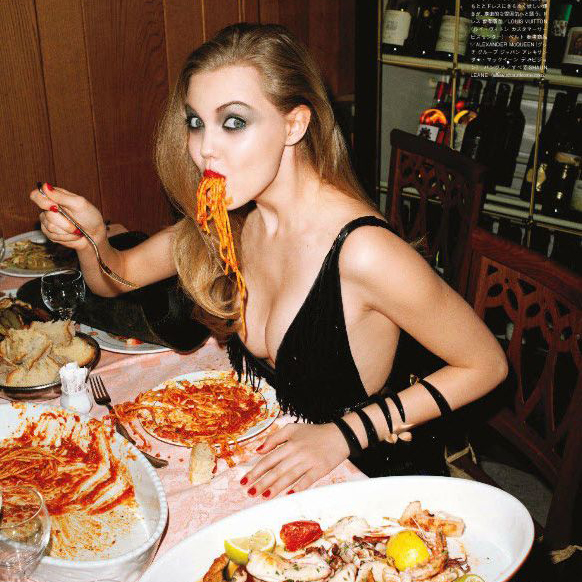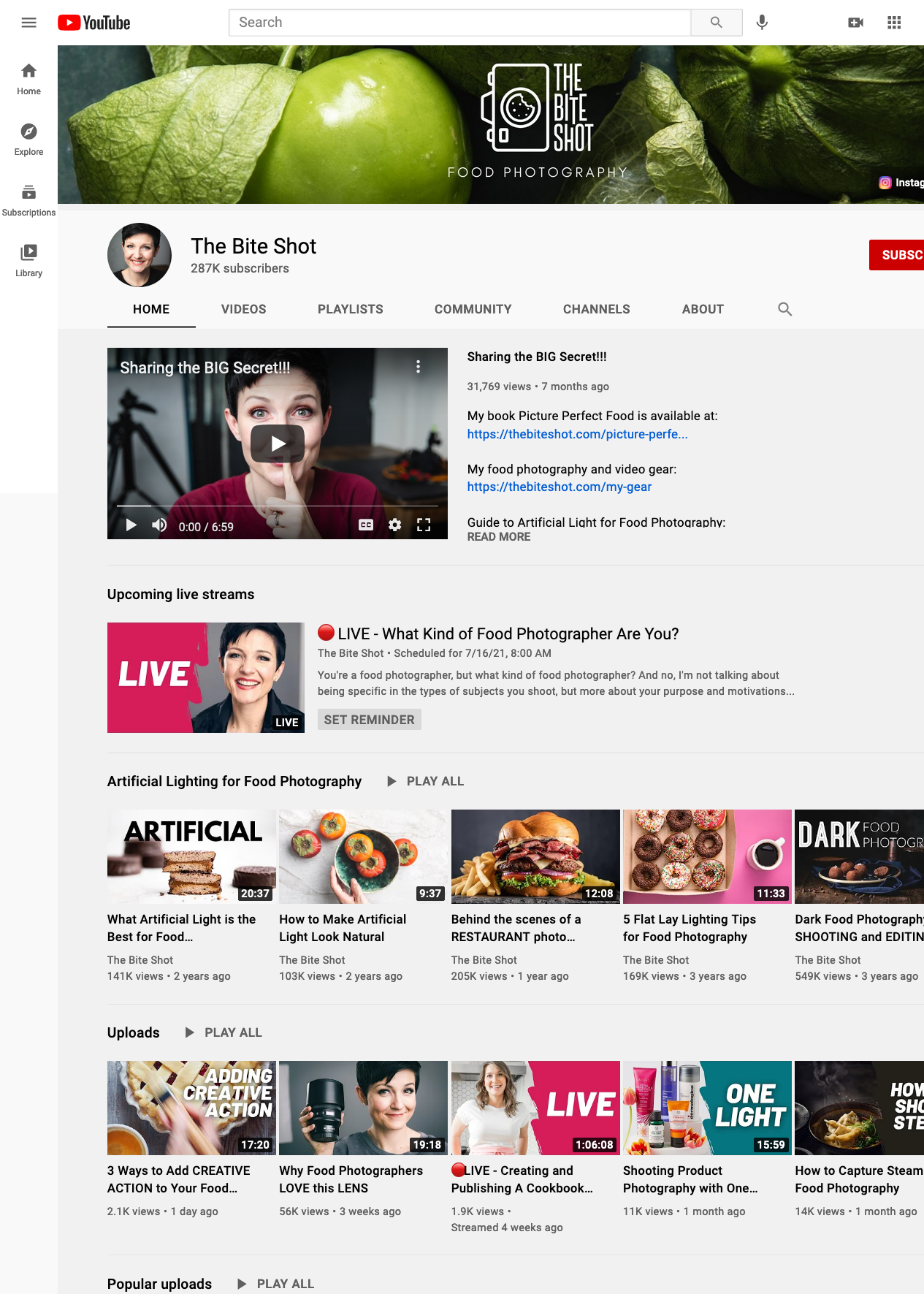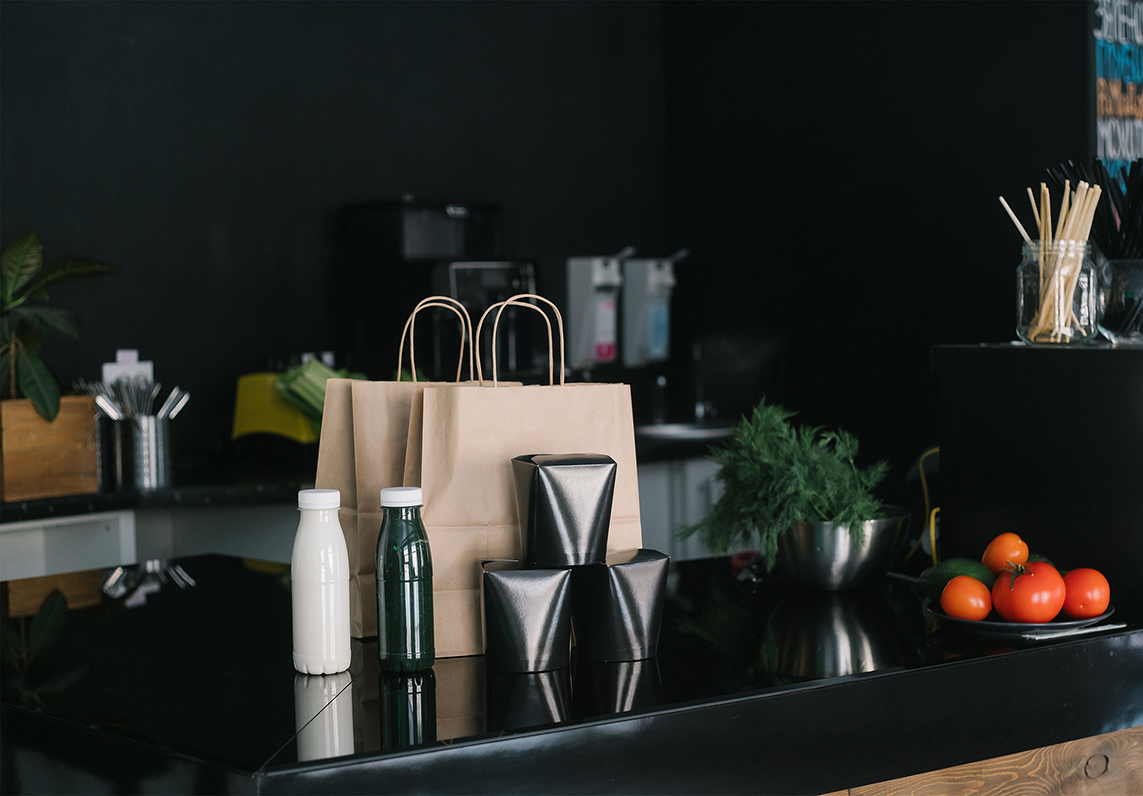Get Inspired by 5 Food Photography Lighting Styles Mastered by Famous Photographers
To be a good photographer, you must be able to adapt to your needs and your client’s needs, while staying consistent with the creative direction of the project. For example, you practice shooting interesting fruit arrangements or as fresh baked cake for your food blog at home with diffused light coming through a window and they may come out fantastic. However, to be a successful commercial photographer, you most likely won’t be able to (unless you are hired specifically for natural light photography) stick to just one lighting scheme. You must step out of your lighting comfort zone. Using examples from 5 famous photographers, we show you 5 distinct food photography lighting styles, so you can experiment and master these looks.
There is No “Best” Lighting in Food Photography
One aspect of photography that sets it apart from other mediums is the simultaneous use of the scientific and creative mind. It is a mixture of technology and art. If shooting an 8-minute exposure with lens extensions or bellows, the calculations for exposure correction and reciprocity are more than most can do in their head. This is the technical. When looking at a still life, a photographer may decide to turn an apple so the outside edge changes shape ever so slightly. This is the creative.
Lighting includes both of these realms more than any other subject in photography. At the same time it is ultra-technical, and a creative choice. The “best” lighting for each shot depends completely upon your personal taste and the feeling you want to create. By looking at some examples of successful photographers, we will explore some food photography lighting styles. Upon finishing each section, think about why you yourself might want to implement each technique.
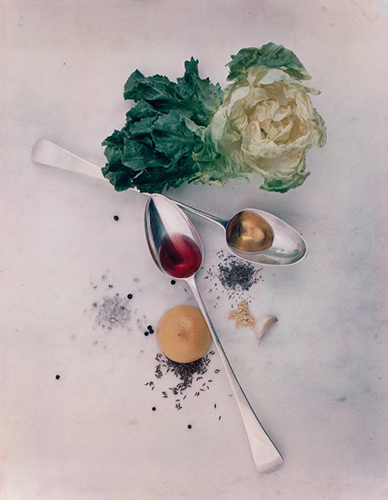
Irving Penn – Clear and Balanced Studio Lighting
One of Vogues most prolific and famous photographers, Penn is a great photographer to research if you are working in a commercial editorial field, yet don’t want to sacrifice your artistic sensibilities. In the example above, there are hardly any shadows. This can be quite difficult to achieve. One must keep two considerations in mind: diffusion and balance.
The less diffused the light, the harsher the shadows. The more the light comes from only one side, again, the harsher the shadows. To achieve the look in the Irving Penn photo there must be light coming from above. Consider the diagram below:
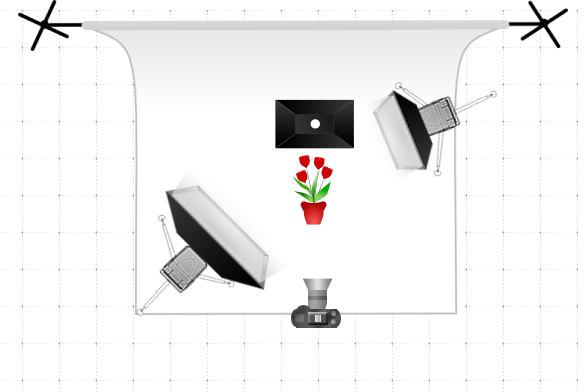
In the diagram, light is coming from 3 different sources, all emitting diffused light. The camera of course would be angled downward from above as well (not represented in diagram). For soft light, a softbox is a studio photographers best friend. In Salad Ingredients, the strongest light was most likely coming from above, while other lights filled in from the sides. To fill in light and erase shadows reflectors can also be used. Even when shooting outside of the studio, think about what can act like a softbox/diffuser. Maybe a textured window, a hanging bed linen, or the reflected light of a pure white wall can improvise as a surprisingly effective soft-box.
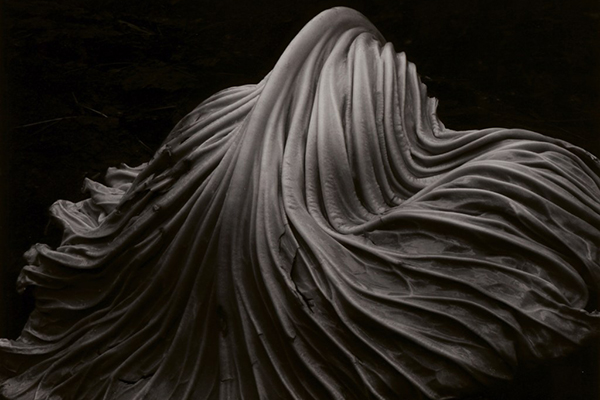
Edward Weston – Deep Shadows, Contrast with Mid-Tones
Now, the next food photography lighting style is low-key. When using low-key lighting, the outcome will be deep shadows and high contrast. Edward Weston masterfully captured the contours and texture of food throughout his work. In the photo of a head of cabbage above, most or all of the light is coming from the top-right. This is what creates the deep shadows. Just because you use low-key lighting doesn’t mean you have to sacrifice mid-tones. Edward Weston usually used natural light to illuminate his subjects, which, depending on the time of day, is also naturally diffused. Using one diffused light source will give you deep shadows without losing too much mid-tone range.
Try moving the single light source more and more to the side of your subject, noting the way the shadows change. Pay attention to when the shadows appear, when they intensify, and when they reach a point where they distract from the beauty of the subject more than underline the curves and texture.
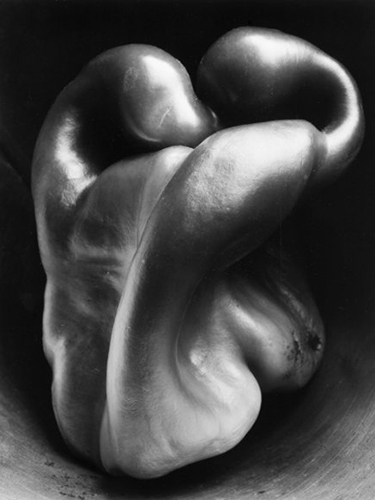
This Weston image is perhaps the most famous food photo of all time. It also might not be the best to illustrate food photography lighting styles. This is because it was shot in a tin funnel, reportedly using a four-six hour exposure, so the light was shifting as the earth was spinning. It does though, show us exactly what using deep shadows can do. Shadows exaggerate the curves of the pepper. The right middle of the body of the pepper is nearly completely in the dark, making it appear more slender and twisted. The shooting methods of classic photographers are sometimes much more avant-garde than they may seem. Try using non-traditional reflectors, like a tin funnel, to play with light in your own work.
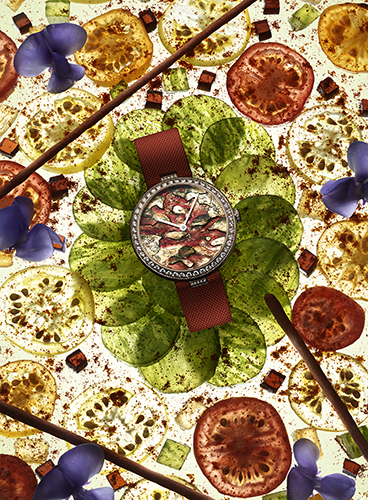
Peter Lippmann – Backlighting and Translucence
Look at those tomatoes! The secret to the visual interest of this Peter Lippmann watch advertisement is translucence. A common problem food photographers encounter is, for example, after shooting 100 shots of tomatoes, they skeptically doubt, “are these photos even interesting?” Maybe they are interesting to others, but not to you–you have high-standards and it’s time for something new. Translucence, if shot correctly, is almost instantly interesting. Why? Because it’s less common than the opaque and the transparent. What we see in everyday life doesn’t engage us as immediately as the exotic. Translucence is just one example, macro photography or uncommon angles that present an object differently than we usually see it also work.
An easy tip to reinvigorate your food photography lighting style is to watch for translucence. It shouldn’t be too hard, many foods possess this quality. Imagine how the sun shining behind a tree’s leaves reveals their veins. Like in the Lippmann photo, lighting from the back will expose the hidden textures within the food.
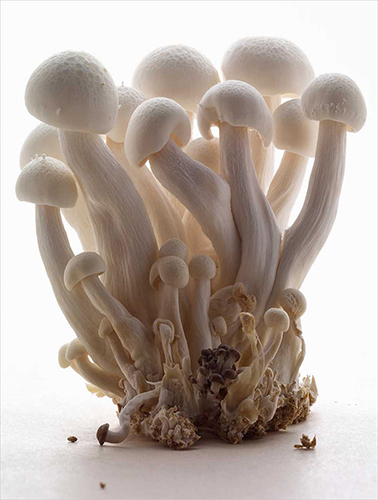
Another effect of backlighting food is haze, like at the top of these mushroom. This style of lighting is quite popular in food photography and it works very well in this image. The light adds to the upward movement of the image. At the bottom the mushrooms are smaller and darker. They twist to reach the ethereal light at the top as if they are growing. Of course, if there were only a backlight and nothing more, the front of the mushrooms would not be illuminated. Filling in light from the front with a reflector or second light source will preserve the details shadowed by the backlight.

Terry Richardson – Harsh Flash for Foodporn
Some words that come to mind when Richardson’s name is spoken: brash, controversial, edgy, etc. His content and punk rock past may explain a few of these labels, but one initial rule he broke was lighting. Traditional portraiture lighting could be broken into two categories, low-key and dramatic vs. soft mid-tones. Richardson quite often uses a single flash, only slightly off-camera, that sometimes blows out the face of his subject. Also, he uses instant cameras with flash, an even more direct and uncontrollable light source. This process also leaves behind distracting shadows that do not separate enough with the actual subject to become aesthetically pleasing. Well, a lot of the last sentence’s terminology is extremely subjective, so let’s focus on what his “screw the rules” method creates.
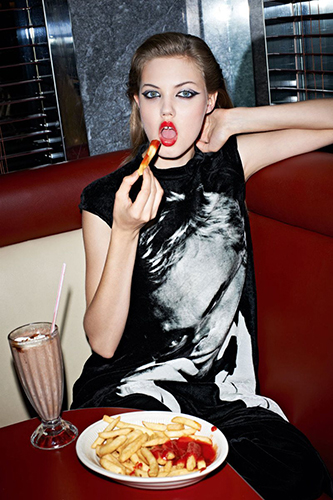
Even though these two examples are quite posed, the feeling is voyeuristic. The subject is literally a deer in headlights. The viewer feels they are caught in a candid moment, which doesn’t happen with classically lit fashion shots, there is too much artifice. Much of Richardson’s work references sexuality, which food pairs well with. The desire for flavor and sustenance is easily compared to the libido. The shame of eating unhealthy foods is similar to the shame of unhealthy sexual desires. But not all harsh flash food porn photography has to be sexual. In general, when photographing people eating, more “pedestrian” lighting techniques can also provide humor, fun, or a sense that the photo doesn’t take itself too seriously.
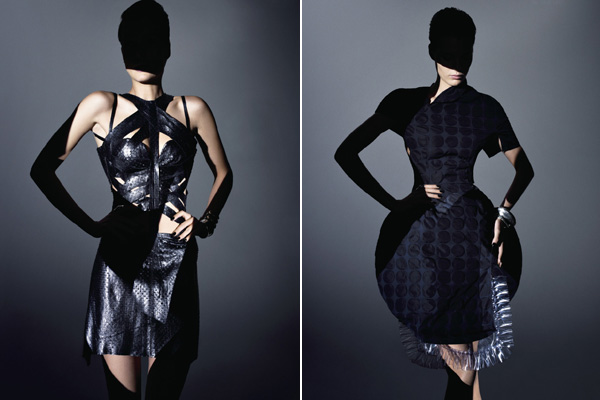
Richard Burbridge – Shadow-play to Abstract
Richard Burbridge is a fashion photographer who has worked for many famous magazines AND FASHION BRANDS CAMPAIGNS. He frequently obstructs his subject with objects, light, or shadows. In the example above the light sources are actually blocked by large opaque objects, casting a dark shadow on the model. This is different from the kind of lighting we discussed in the Edward Weston section because the shadow is not derived from the subject itself. Think about a cityscape during the day, the sun brightens the streets except where the buildings block the light. This is effect although much more interesting because we are not accustomed to seeing it in a fashion setting.
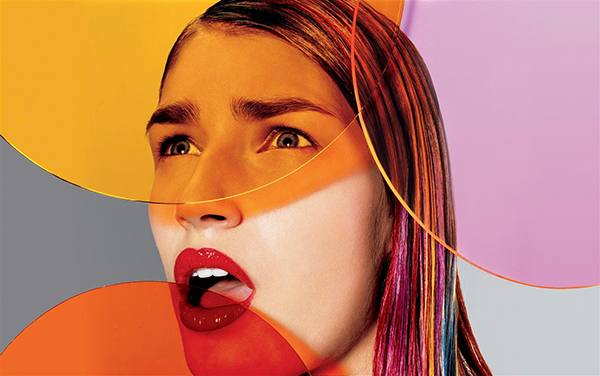
Early 20th century photographers shooting in black and white created a modernist aesthetic by transforming recognizable objects into abstract forms through shadow. Burbridge does the same in these photos. In the first, the straight lines of the shadows echo the firm angularity of the dress (especially the neckline). The colored discs really are the whole composition to the second photo; without them this shot would be quite boring.
This lighting style could easily be used for food as well! The usual forms of nature (curved) and the man-made (linear lines) are extremely different. When photographing food you must consider the shape of the food, is it in its natural organically shaped form? Has it been processed into a cube? Your lighting can accentuate or contrast these kinds of shapes.
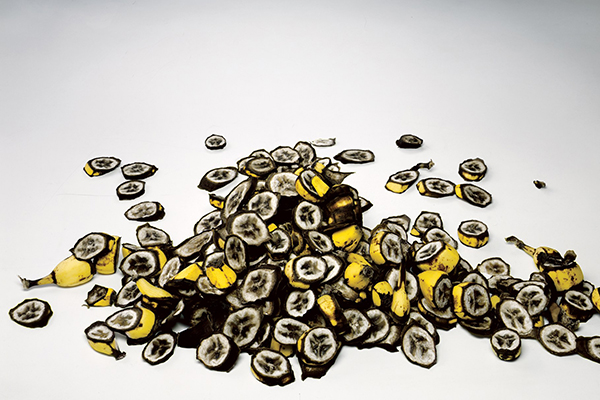
Show Off Your Lighting Skills
A varied portfolio with a good focus will impress galleries or commercial clients. Any decent food photographer can take photos with varied angles, content, and lighting, but few can do so while maintaining their own style–that is the tricky part. All the photos in this post might not really go together in one portfolio, your identity would be lost. Maybe you excel at selecting pastel color arrangements, painterly still life photos, or composing minimal and modern abstract shapes. Play around with these food photography lighting styles, but even more importantly, find your own unique look!




